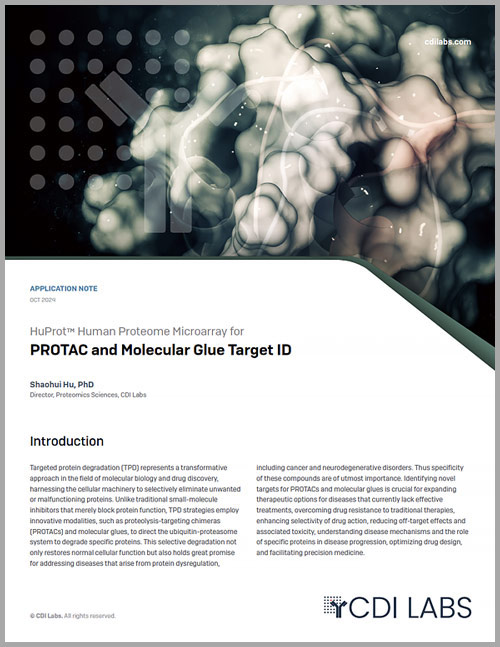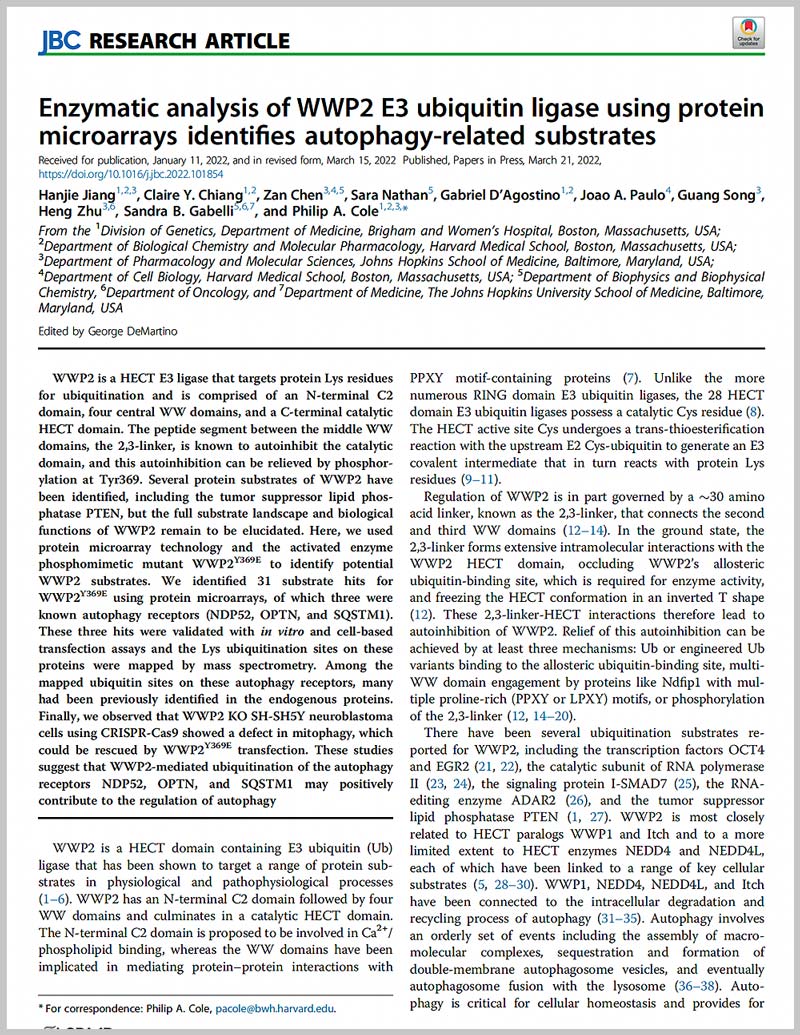- Follow Us
CDI Labs Services for
Chemically Induced Proximity (CIP)
HuProt for PROTACs (PROteolysis TArgeting Chimeras), LYTACs (LYsosome TArgeting Chimeras), and AUTOTACs (AUTOphagy- TArgeting Chimeras).
REQUEST INFOHuProt for Chemically Induced Proximity
Many disease treatments target a specific protein with the goal of blocking it, activating it, or destroying it (often called targeted degradation). The challenge with this methodology is that most protein targets don’t have sites that conventional medicines can efficiently bind to, resulting in an estimation that only 15% of human proteins are “druggable” with conventional medicines. Multispecific medicines address this challenge by leveraging the concept of chemically induced proximity (CIP), which uses small molecules or chemical ligands to bring two proteins or other biological molecules into close proximity. CIP is a powerful approach used in chemical biology and drug discovery to modulate protein function through the controlled assembly of protein complexes. CIP technologies, such as PROTACs (PROteolysis TArgeting Chimeras), LYTACs (LYsosome TArgeting Chimeras), and AUTOTACs (AUTOphagy- TArgeting Chimeras), leverage small molecules to induce the proximity of target proteins with specific cellular components, leading to their degradation or modification.
HuProt™ Human Proteome Microarray for PROTAC and Molecular Glue Target ID
Introduction
Targeted protein degradation (TPD) represents a transformative approach in the field of molecular biology and drug discovery, harnessing the cellular machinery to selectively eliminate unwanted or malfunctioning proteins. Unlike traditional small-molecule inhibitors that merely block protein function, TPD strategies employ innovative modalities, such as proteolysis-targeting chimeras (PROTACs) and molecular glues, to direct the ubiquitin-proteasome system to degrade specific proteins. This degradation approach, which must be highly specific, not only restores normal cellular function but also holds great promise for addressing diseases that arise from protein dysregulation, including cancer and neurodegenerative disorders. Identifying novel targets for PROTACs and molecular glues is crucial for expanding therapeutic options for diseases that currently lack effective treatments, overcoming drug resistance to traditional therapies, enhancing selectivity of drug action, reducing off-target effects and associated toxicity, understanding disease mechanisms and the role of specific proteins in disease progression, optimizing drug design, and facilitating precision medicine.
The featured publication below outlines that the identification of protein substrates of ubiquitin E3 ligases in genetic/cellular experiments is challenging because of the complex milieu of the cell, the hundreds of E3 ligases present, and the potential for many indirect effects associated with loss- or gain-of-function of a particular enzyme. HuProt™ microarray technology was highlighted as offering an attractive alternative to standard cellular experiments because its application can rapidly and directly assess proteome wide enzyme-substrate relationships, even for low abundance proteins.
Enzymatic analysis of WWP2 E3 ubiquitin ligase using protein microarrays identifies autophagy-related substrates
Abstract
Here, we used protein microarray technology and the activated enzyme phosphomimetic mutant WWP2Y369E to identify potential WWP2 substrates. We identified 31 substrate hits for WWP2Y369E using protein microarrays, of which three were known autophagy receptors (NDP52, OPTN, and SQSTM1). These three hits were validated with in vitro and cell-based transfection assays and the Lys ubiquitination sites on these proteins were mapped by mass spectrometry.
VIEW PAPER

